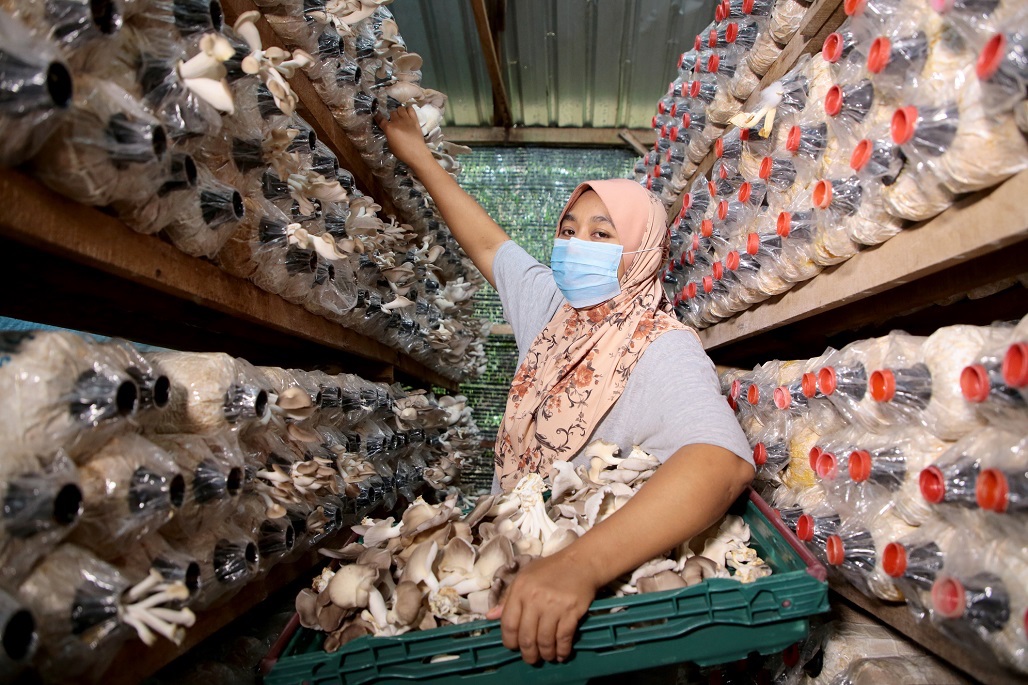With the global halal food market estimated to grow to $1.38 trillion in 2024 from $1.17 trillion in 2019, it is not a surprise that BIMP-EAGA countries are striving to get a bigger share of the lucrative business and are making inroads toward that goal.
According to the State of the Global Islamic Economy Report 2020/21, three of the BIMP-EAGA countries are among top 10 economies best-positioned to take advantage of opportunities in the sector. Malaysia topped the list, Indonesia ranked fourth, and Brunei Darussalam, ninth. All three have a large Muslim population. Close to 80% of Brunei’s population is Muslim, Malaysia, 61%, and Indonesia, 88%.
The top 10 also included Singapore (second), United Arab Emirates (third), Turkey (fifth), Iran (sixth), South Africa (seventh), Pakistan (eighth), and Russia (tenth).
In the previous ranking, Malaysia ranked second and Brunei, eighth.
The report said Indonesia moved up eight positions in the halal food indicator ranking in 2020–2021, following its exports to member countries of the Organisation of Islamic Cooperation (OIC), considered the collective voice of the Muslim world.
The Philippines, which is also part of BIMP-EAGA, did not make it to the list, but the report noted initiatives that advanced the country’s halal program, including a deal with Indonesia to facilitate Philippine halal exports and the launch of a national halal logo.
BIMP-EAGA’s halal drive
All four BIMP-EAGA countries had been busy over the past year to grow their halal food reach.
In December 2020, Brunei Darussalam signed a deal with Taipei,China to create a supply chain linking them into the global Muslim market. In October, Indonesia encouraged halal industry players, particularly its micro, small- and medium-sized enterprises, to go after the global halal market. Malaysia is pursuing strategic cooperation with other countries and halal companies for their halal ecosystem. Meanwhile, the Philippines wants to develop in Mindanao, where close to 25% of the population is Muslim, special economic zones for halal food producers and investors.
BIMP-EAGA’s economic blueprint Vision 2025 considers halal as a growth driver, with food one of the economic pillars of the subregion. It considers halal as a crucial industry the subregion needs to further develop, particularly for the Philippines.
Vision 2025 seeks to develop a competitive halal industry that produces market-compliant halal products and services for both local and global markets. It aims to harmonize the halal industry among the member countries, specifically their agro-industry and fisheries sectors. It also seeks to develop halal standards for food and non-food commodities, human resource development, infrastructure development, and product development and technology transfer.
Halal ecosystems
Overall, the global Islamic economy report examined and ranked countries’ ecosystems for Islamic products and services, which apart from halal food, include finance, travel, fashion, media/recreation, and pharmaceuticals/cosmetics.
The report, which is now on its eighth year, was produced by research and advisory firm DinarStandard, with support from the United Arab Emirates’ Dubai the Capital of Islamic Economy initiative and news and insights platform Salaam Gateway.
Malaysia topped the overall ranking for all the halal segments, while Indonesia ranked fourth.
Muslim spending
The report said the global Muslim market continues to be an attractive segment as 1.9 billion Muslims spent $2.02 trillion in 2019 across the food, pharmaceutical, cosmetics, fashion, travel, and media/recreation sectors. This represented a 3.2% year-on-year growth from 2018.
Spending in 2020, however, is expected to drop 8% because of the coronavirus disease (COVID-19) pandemic. All the sectors are expected to return to pre-pandemic levels by end-2021, except travel.
The report estimates that Muslim spend across all segments will reach $2.4 trillion by 2024 at a 5-year annual growth rate of 3.1%.
Impact of COVID-19
As with many other sectors, the halal food sector was not spared from the impacts of COVID-19.
“Digitalization is rapidly transforming the halal food sector, a trend accelerated by the spread of COVID-19,” the report said. It noted that halal food players had to migrate to e-commerce and online grocery and delivery due to social distancing restrictions, while dining out and business-to-business foodservice sales weakened.
The report also noted that the halal food industry moved a step closer toward the standardization of regulation, with the Standards and Metrology Institute for Islamic Countries publishing key halal standards. The institute is the rule-making body for halal products and services for OIC members. A harmonized standard across countries is expected to create more opportunities for all stakeholders, the report said.
Apart from e-commerce delivery, the pandemic also opened opportunities and interests in food security initiatives, healthy/functional/clean label foods, snacks and meal replacements, proteins and alternative proteins, plant-based foods, at-home cooking and baking products, agri/food-tech, meal kits/ready-to-eat/ready-to-cook/frozen food, and supply-chain disruptions/alternative sourcing.
"With the demand for traceability—from farm to fork—on the rise, and more customers seeking out halal-certified products, the halal food sector is set to continue being the driver of the Islamic economy,” the report said.
